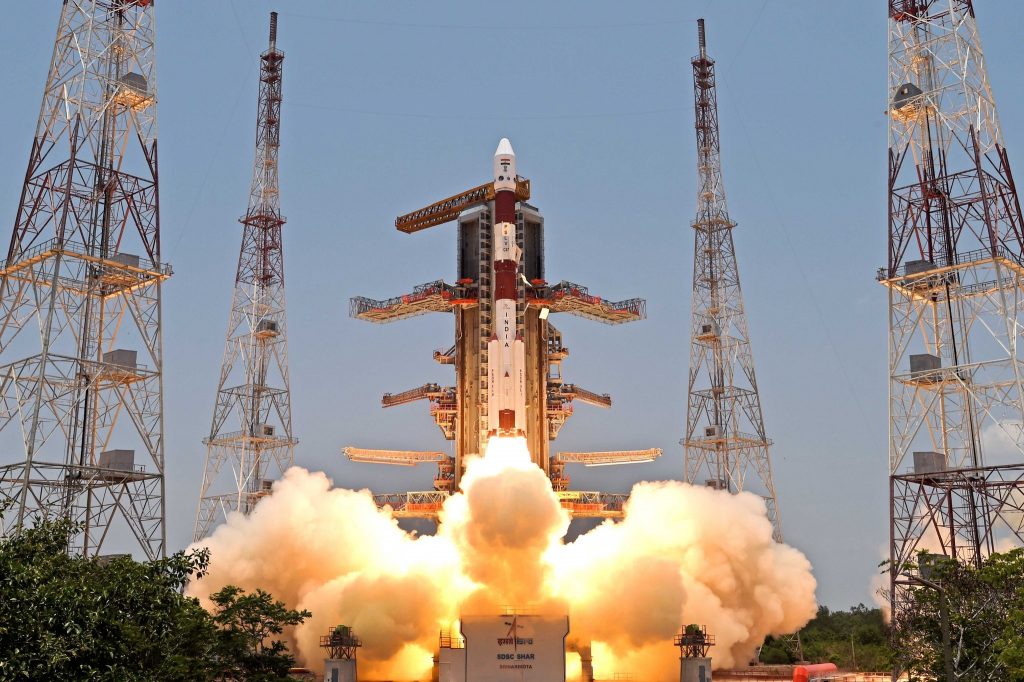
A major reason for sudden interest in the moon mission is the quest for a cheap source of energy. Helium 3, which is found on the moon, where it has accumulated by solar winds in billions of years, promises to be a future energy superstar. A report by Pawan Kumar Bansal
India’s space agency, ISRO (Indian Space Research Organisation), has demonstrated technological prowess by successfully launching missions to explore Mars (Mangalyaan), the Moon (Chandrayaan) and now the Sun (Aditya L1).
These missions contribute to our understanding of the universe and our own planet. Chandrayaan missions, for example, have provided valuable data on the Moon’s composition, helping scientists to learn more about lunar history and resources.
The Indian Space Research Organisation (ISRO) has just shared fresh images taken by Aditya-L1. As part of ISRO’s solar mission, Aditya-L1 is scheduled to reach the Sun-Earth L1 point. It has now taken a selfie. It has also captured images of the Earth and the Moon, as shared by ISRO on X (formerly Twitter).
India’s first space mission to study the Sun is called Aditya L1. It will reach a point 1.5 million km away from Earth to a special spot known as Lagrange point 1 (L1). Being at this point lets the spacecraft always see the Sun without any interruptions like eclipses. This will help ISRO better understand what the Sun is doing and how it affects space weather in real-time.
ADIYTA L1 mission will study the Sun’s atmosphere and help scientists to better understand how the Sun works and how it affects life on Earth. It will be projected at about 1.5 million km from Earth in a halo orbit around the L1 Lagrange point between the Earth and the Sun where it will study the solar atmosphere, solar magnetic storms, and their impact on the environment around the Earth. India’s space agency says it will take four months to travel that far. India’s first space-based mission to study the solar system’s biggest object is named after Surya – the Hindu god of Sun who is also known as Aditya.
Indian forays into Space technology are crucial for national security. India’s space capabilities play a role in communication, surveillance, and defence, ensuring the country’s security interests. As India collaborates with other space agencies and nations, fostering international cooperation in space exploration and technology development is another motive. This helps strengthen diplomatic ties and scientific exchange.
The space industry can boost a nation’s economy through satellite services, launch services, and technology spin-offs that find applications in various sectors, from agriculture to telecommunications. Successful space missions inspire the nation’s youth and promote STEM (Science, Technology, Engineering, and Mathematics) education. They serve as a source of pride and motivation for future scientists and engineers.
Indian satellites are crucial for monitoring environmental changes, weather forecasting, disaster management, and resource management. This helps in mitigating the effects of natural disasters and managing resources effectively. India’s participation in space missions contributes to global efforts to understand space, climate change, and sustainable development. It also elevates India’s standing in the international community.
The ultimate objective of space missions is to showcase the World where India stands now and what it aims to achieve in future. A major reason for sudden interest in the moon mission is the quest for a cheap source of energy. Real game changer is helium 3 which is found on the moon. Helium 3 has accumulated on the moon by solar winds for billions of years. Helium will be a future energy superstar.
One tonne of Helium 3 will produce 1000MW of energy, the cost of 100 kg of Helium 3 will be 140 million dollars, sufficient to run a 1000-megawatt plant for a year. Helium 3 will be a game changer in the energy industry. This energy will be produced by fusion with hydrogen isotope deuterium. Vikram lander and Pragyan will be looking for helium deposits. If India succeeds in this, oil dependence will go. We will be the first 3 countries of the world who will dominate planet earth.












